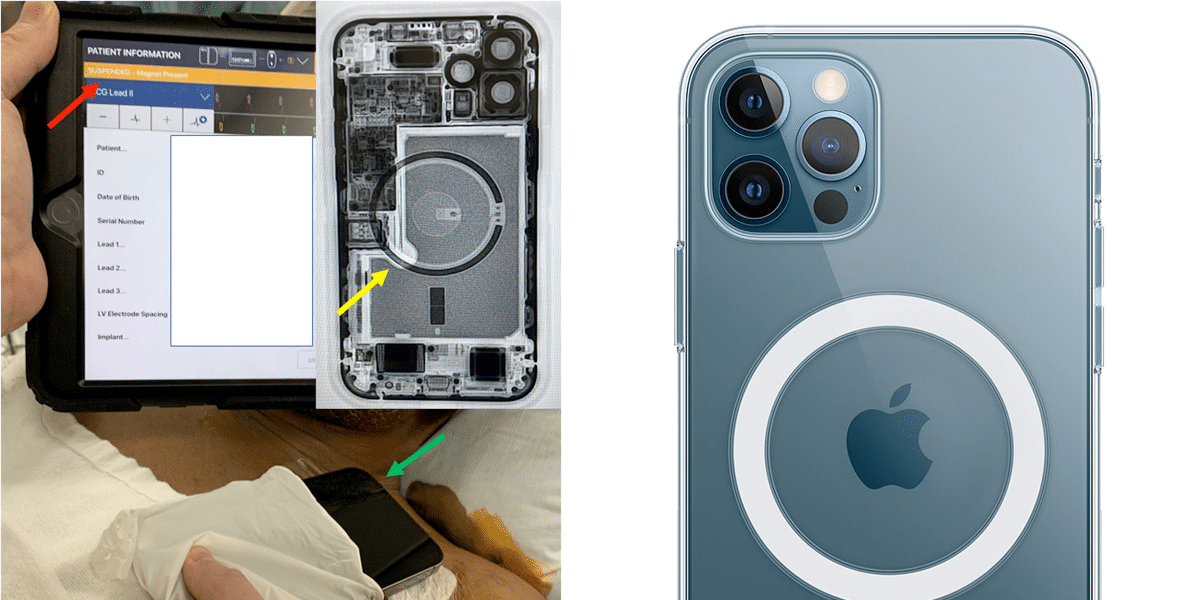
The launch of the iPhone 12 brought with it the return of the standard MagSafe born on Mac. It is a range of accessories based on a complex system of magnets located on the back of the iPhone 12. These magnets are found in the four different models and we can use cases, chargers or even wallets. Against all odds by the data provided by Apple, the medical journal Heart rhythm journal has published a study showing an iPhone 12 disabling an implantable defibrillator. However, Apple ensures that the new MagSafe does not pose a "greater risk" than previous generations.
An iPhone 12 manages to deactivate an implanted defibrillator
Implantable cardioverter defibrillators are the standard therapy for many of the known malignant ventricular arrhythmias in high-risk patients. These devices are implanted in the patient and consist of a battery, capacitors, sensing or pacing circuits, and leads that connect to regions of the heart to produce the necessary shocks. When a magnet is applied to a defibrillator there is a probability that it will deactivate leaving the patient without life-saving therapy.

The magazine Heart Rhythm Journal has published an article in which he shows the experience of a iPhone 12 that has managed to disable one of these defibrillators. However, it is surprising since Apple in its support website ensures that the new MagSafe does not pose a greater risk than any other generation of iPhones:
Although all iPhone 12 models contain more magnets than previous iPhone models, they are not expected to present a greater risk of magnetic interference to medical devices than previous iPhone models.
In the article it can be seen as an iPhone 12 placed on the left chest area produced the deactivation of the implanted defibrillation therapy in the patient. The experiment was repeated several times at different positions within the pocket and produced the same effect. The results point, according to one of the authors, to a public health problem where not only the iPhone can cause a problem but also any device that manages to create an electromagnetic field external to the defibrillator.
Image – Life Saving Therapy Inhibition by Phones Containing Magnets
You have to be careful with the iPhone 12 like any other object that contains magnets. Those of us who have pacemakers and have read the user manual know that we should not bring a magnet closer than 15 cms. pacemaker. But if this happens, it is not a serious problem either. When they track your pacemaker, they place a magnetized sensor on you and through induction, the pacemaker is connected to the doctor's computer, to view data or modify the device settings. At this point, the pacemaker is no longer in "alert" mode and goes into "transmission" mode. If you stick a magnet, the pacemaker can interpret it as the doctor's sensor and go into "transmit" mode. As soon as the magnet is removed, it returns to its normal "alert" state, functioning properly again. I have an iPhone 12 Pro since October, and I'm still alive ...